Dear readers, we are pleased to present a collaboration that we hope will be beautiful, useful and interesting for you: as of today, in fact, Finestre Sull’Arte and Pronti Partenza... Via di Fabrizio Vaghi are collaborating to take you on a journey of discovery through the cities of Italy.
For those who don’t know it, Pronti Partenza... Via is a beautiful tourist-cultural column, a program that takes the viewer, from time to time, to a different city in Italy telling about its history, architecture, art, traditions, and of course food and wine specialties. The host, Fabrizio Vaghi, works as a travel reporter, collaborates with several local TV stations and has numerous trips to his credit! For those who would like to watch the broadcasts and stay updated, here are links to the YouTube channel and Facebook page.
So for the first appointment with Fabrizio’s travel column, we decided to take you on a discovery of Padua. Within the article, we also bring you the video of the episode of Ready, Set... Away dedicated to the Venetian city. Enjoy reading (and good viewing)!
What better city if not Padua to start talking about art in this first appointment that will tell about some of the most beautiful cities in Italy?
Well, let’s start right from Padua, where we were a few months ago to conduct one of the episodes of “Pronti Partenza...Via” a tourist-cultural column born in 2013, in constant development thanks to the many cities of art that our country offers us and that we have the pleasure to tell you more than gladly.
Padua is not as well known to the general public as nearby Venice, but I assure you that in terms of art treasures it has nothing to envy its sister (or cousin??) from Veneto: museums, churches adorned with frescoes, the squares, the university, the palaces...
Perhaps not everyone knows that, speaking of palaces, in Padua stands the palace with the largest hall in Europe. It is the Palazzo della Ragione, which divides the Piazza delle Erbe from the Piazza della Frutta, both of which are places for fruit and vegetable markets. The building in the Middle Ages housed the Court of Justice while the ground floor still contains stores. The second floor is occupied entirely by the 80-meter-long and 27-meter-wide “Salone,” embellished with a cycle of frescoes by Nicola Miretto over 200 linear meters, replacing Giotto’s earlier frescoes, which were destroyed by fire.
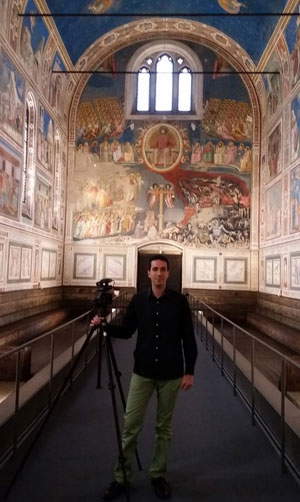 |
| Here is Fabrizio inside the Scrovegni Chapel :-) |
Next to the chapel stands the Museo agli Eremitani, a very rich and vast collection spanning several centuries; and in the adjacent Church of the Eremitani, unfortunately badly damaged by World War II bombing, some of Mantegna’s frescoes that adorned the walls of the Ovetari chapel in the right transept.
Staying on the subject of frescoes, a visit to the Cathedral baptistery, entirely frescoed by Giusto de Menabuoi, cannot be missed. The baptistery, which originated as the mausoleum of the Carraresi, lords of the city, contrasts with the bareness of the cathedral’s interior surfaces: absolute white. At this point I could stop and leave the floor to you, asking what struck you most about the city (either live-if you had the opportunity to visit it-or just thanks to our video), but I cannot fail to mention one of the most important symbols for the city.
St. Anthony’s? No, the university. The Patavino athenaeum is one of the oldest in Italy, and in addition to its glorious academic history made of events and personalities, we can visit the oldest botanical garden in the world, a UNESCO excellence, the anatomical theater, the first stable structure for anatomy lectures by dissection of cadavers, or the chair on which Galileo held his crowded lectures.
And what about St. Anthony? About the “Saint,” the name by which we habitually address the shrine, I would have more flattering words to say, as well as about countless other city monuments, but I prefer to stop here, leaving you with three questions. A kind of test with which I would like to conclude each article (two answers can be found in the video of the episode in question, one instead you may infer) Ready? Then... off we go, off to new adventures!!!
Question 1: Who was the founder of the city?
Question 2: Does the Roman amphitheater of Padua exist?
Question 3: What happened in 1678 to the University of Padua?
Fun fact of the episode: Prato della Valle is the largest public square in Italy--and perhaps in Europe.
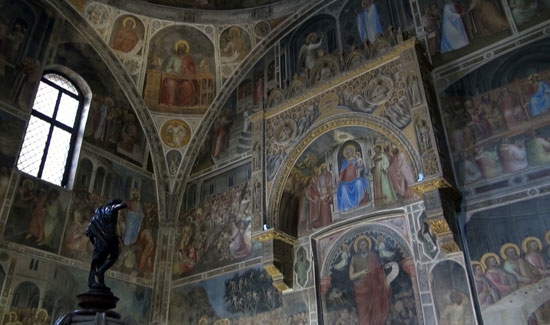 |
| Giusto de’ Menabuoi’s frescoes in the Baptistery of Padua. |
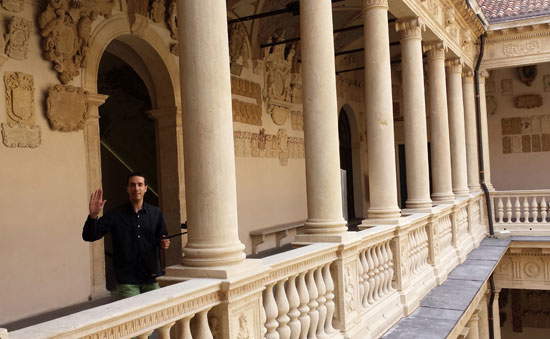 |
| Palazzo Bo (or, as Paduans say, Palazzo del Bo), home of the university |
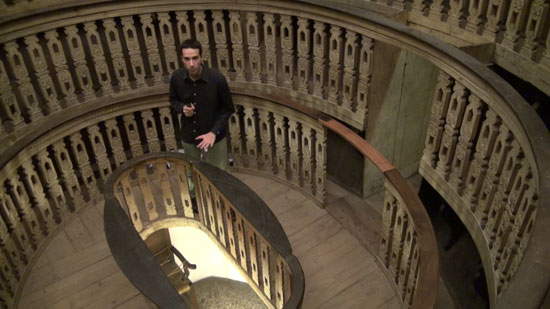 |
| The Anatomical Theater |
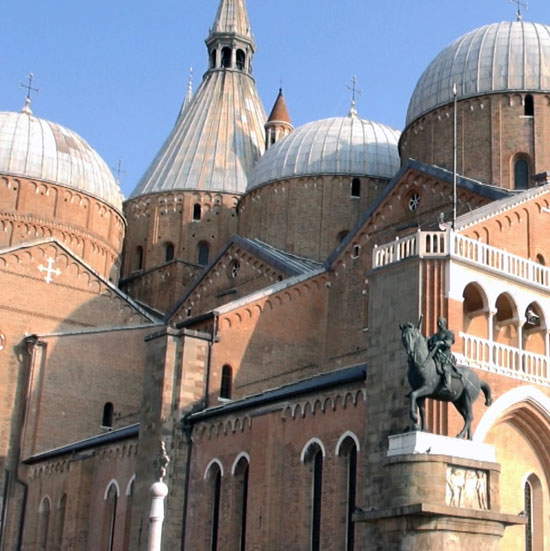 |
| The Basilica del Santo |
Warning: the translation into English of the original Italian article was created using automatic tools. We undertake to review all articles, but we do not guarantee the total absence of inaccuracies in the translation due to the program. You can find the original by clicking on the ITA button. If you find any mistake,please contact us.